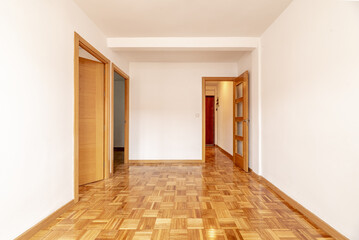Flooring is one of the most important things you should consider when shopping for a new home. It is the foundation of any room, and it should be durable, attractive, and safe.

Flooring refers to the materials that are used to cover the floor surface of a building or room. The purpose of flooring is to provide a durable and comfortable surface for walking and other activities and enhance the space’s aesthetic appeal. This can include various materials, such as wood, tile, vinyl, and carpet. Flooring can be installed in residential and commercial buildings, and many different types and styles are available to suit different preferences and needs.
Many different types of flooring are available, including wood, resilient, tile, and soft surface options. Each type has pros and cons, so it’s best to learn as much as possible before deciding.
Tiles are a versatile and popular type of flooring. They can be made from many different materials, including clay and stones, and they come in a wide variety of colors and designs.
Tile floors are durable and easy to clean, making them a great option for high-traffic areas or homes with kids or pets. They’re also stain-resistant and resistant to cracking and breaking, so they won’t need to be replaced as often as other flooring options.
They’re also environmentally friendly. Since they’re made from naturally occurring clay and minerals, they don’t release any VOCs when they’re used properly.
They also work well in maintaining the temperature of a room. During summers, they help keep a room cool by locking in the air from fans and air conditioners; during winters, they keep the space warm by keeping the heat out. They’re also highly sanitary, so they don’t hold onto dirt and dust like other types of floor coverings.
Hardwood flooring is a classic and timeless option that adds a touch of elegance to any home. The variety of wood species and structures available make it a versatile choice for any decorating style.
It’s also a low-maintenance floor that requires minimal care to maintain its appearance. A sweeping or vacuuming job can keep it looking its best, and occasional damp mopping can help remove stains.
Another reason homeowners choose hardwood floors is for their durability. They come in a variety of Janka hardness ratings, which determine how resistant they are to scratches and scuffing.
They also offer a number of health benefits. Carpets trap dust, pollen, particles, animal dander, and other contaminants that can cause respiratory problems for those who suffer from allergies or asthma. With regular sweeping and basic floor maintenance, hardwood floors will keep your air clean and healthy for years to come.
Laminate flooring is an easy-to-install alternative to hardwood floors. It rests atop underlayment and connects to the rest of the room with snap-and-lock or tongue-and-groove joinery.
This method is popular with homeowners who want to install new flooring without the cost of professional installation. In addition, laminates are durable and are very resistant to dents or scratches.
The core of a laminate floor is a hard HDF (high-density fiberboard) board that has been milled to absolute, micron-precise tolerances. It is then cut into planks that are machined to fit together for snug, reliable installations with one of several locking systems.
The next layer is the decorative-paper or photographic layer, giving the planks a distinctive look. It can be a realistic reproduction of wood, stone or marble in a variety of colors and patterns. It may also feature artwork or paint splatters. Then comes the protective wear layer, usually constructed from aluminum oxide to prevent moisture penetration and keep the planks looking new for a long time.
Vinyl flooring is the most popular form of resilient flooring (a category that includes linoleum and cork) because it’s cost-effective, easy to maintain, and able to withstand heavy foot traffic. It’s also softer than other floor types, which makes it more comfortable on your feet and less likely to hurt you if you trip or fall.
The different kinds of vinyl floors all have the same basic construction: a top layer of digital graphics and color bonded to a base layer of felt or fibrous material. Some of them are self-adhesive, while others require adhesive application.
Sheet vinyl is the most common kind of vinyl used today, but it can also be found in tile forms and as individual planks. The design layers can mimic a variety of natural materials, including stone and wood.
